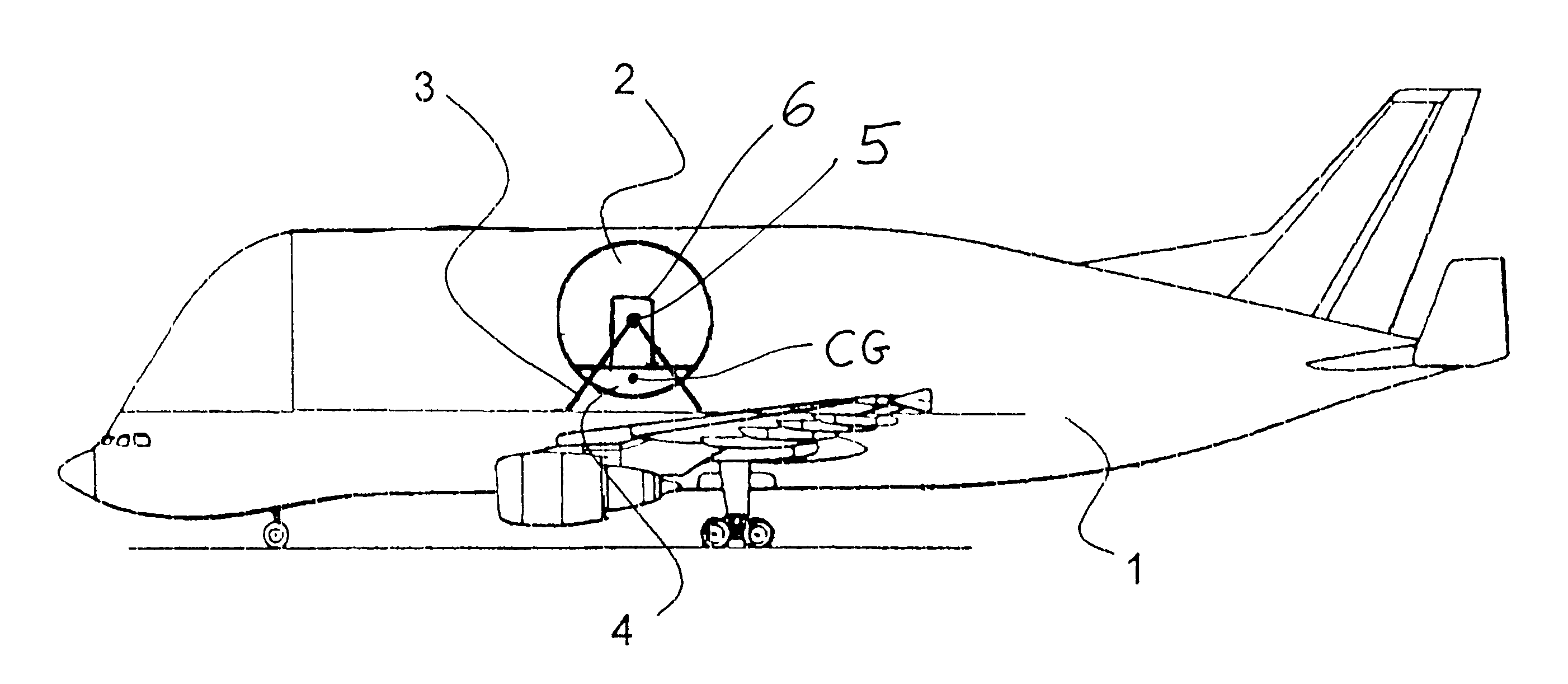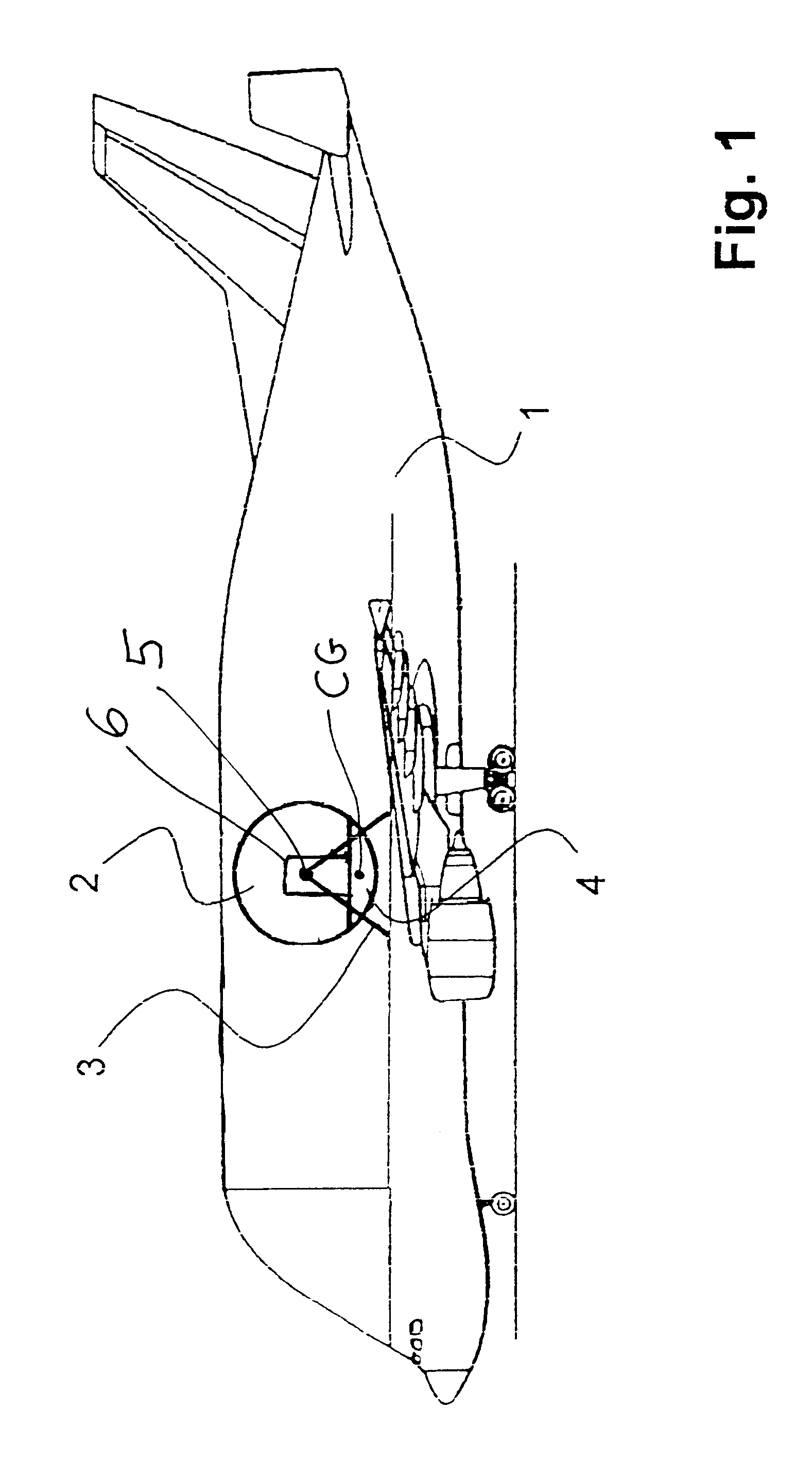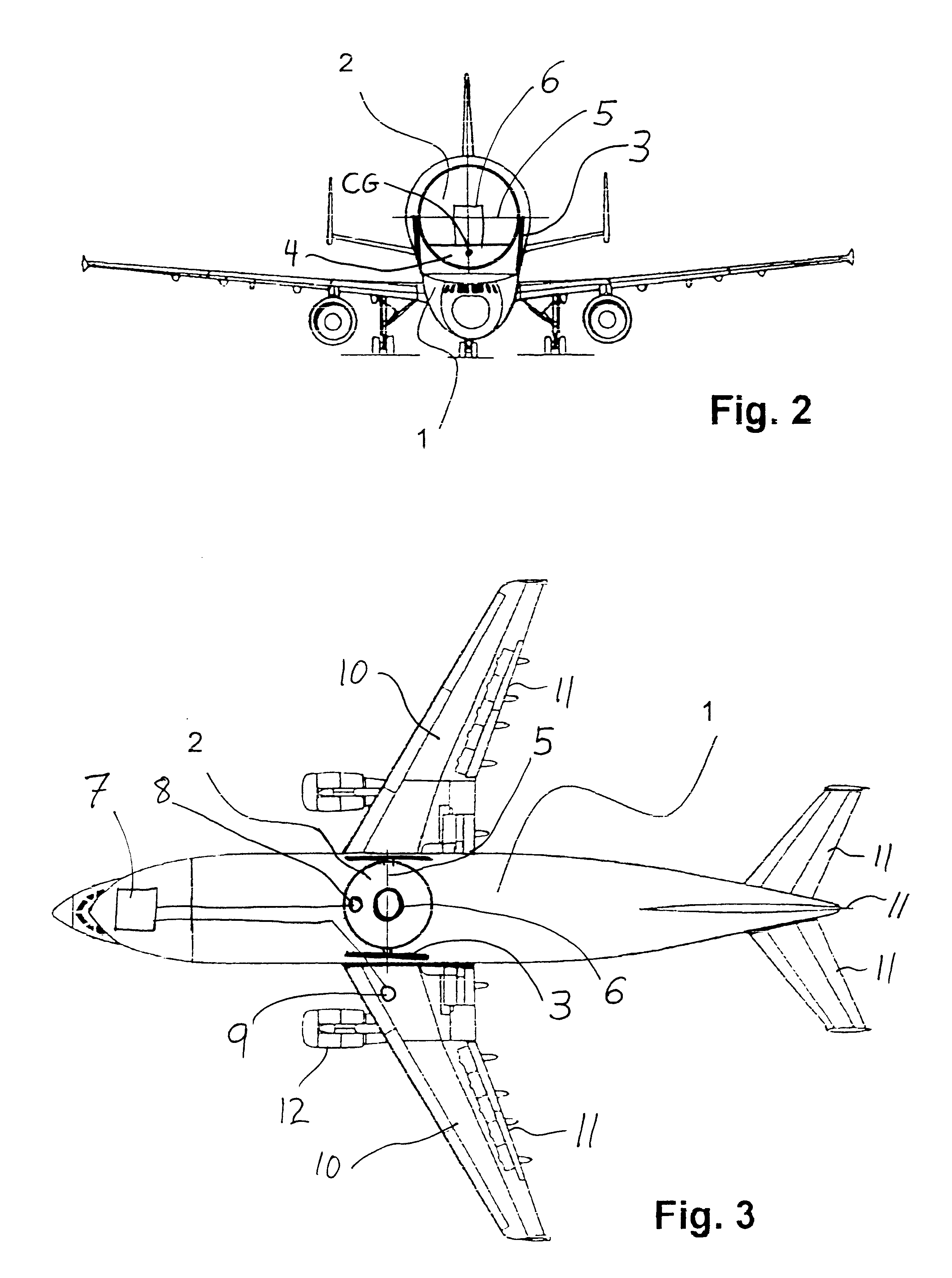Method and apparatus for aircraft-based simulation of variable accelerations and reduced gravity conditions
a technology of variable acceleration and aircraft, applied in the field of aircraft-based simulation of variable acceleration and reduced gravity conditions, can solve the problems of not being suitable for centrifuge methods, unable to achieve accelerations less than 1 g, and being difficult to simulate the small gravitational acceleration of only 3.72 m/s
- Summary
- Abstract
- Description
- Claims
- Application Information
AI Technical Summary
Benefits of technology
Problems solved by technology
Method used
Image
Examples
Embodiment Construction
A large volume or high capacity transport aircraft 1 has a payload or cargo space with a test chamber 2 installed therein. The test chamber 2 is generally in the form of a sphere with a diameter of about 3 to 4 m installed therein. Other test chamber geometries could be used alternatively, but a spherical test chamber is well suited to maintaining a pressure-tight enclosure to establish a desired atmospheric gas composition and pressure within the test chamber 2. By means of suitable equipment 16, such as cooling devices, heaters, gas supply tanks, a gas compressor, regulating valves, and the like, preferably arranged in an underfloor area 4 of the test chamber 2, it is possible to establish an environment within the chamber 2 that realistically simulates environmental conditions prevailing in the atmosphere of Mars, for example with regard to the gas composition of the atmosphere (e.g. about 95 vol. % carbon dioxide, about 2.7 vol. % nitrogen, about 1.6 vol. % argon, and small quan...
PUM
 Login to View More
Login to View More Abstract
Description
Claims
Application Information
 Login to View More
Login to View More - R&D
- Intellectual Property
- Life Sciences
- Materials
- Tech Scout
- Unparalleled Data Quality
- Higher Quality Content
- 60% Fewer Hallucinations
Browse by: Latest US Patents, China's latest patents, Technical Efficacy Thesaurus, Application Domain, Technology Topic, Popular Technical Reports.
© 2025 PatSnap. All rights reserved.Legal|Privacy policy|Modern Slavery Act Transparency Statement|Sitemap|About US| Contact US: help@patsnap.com



